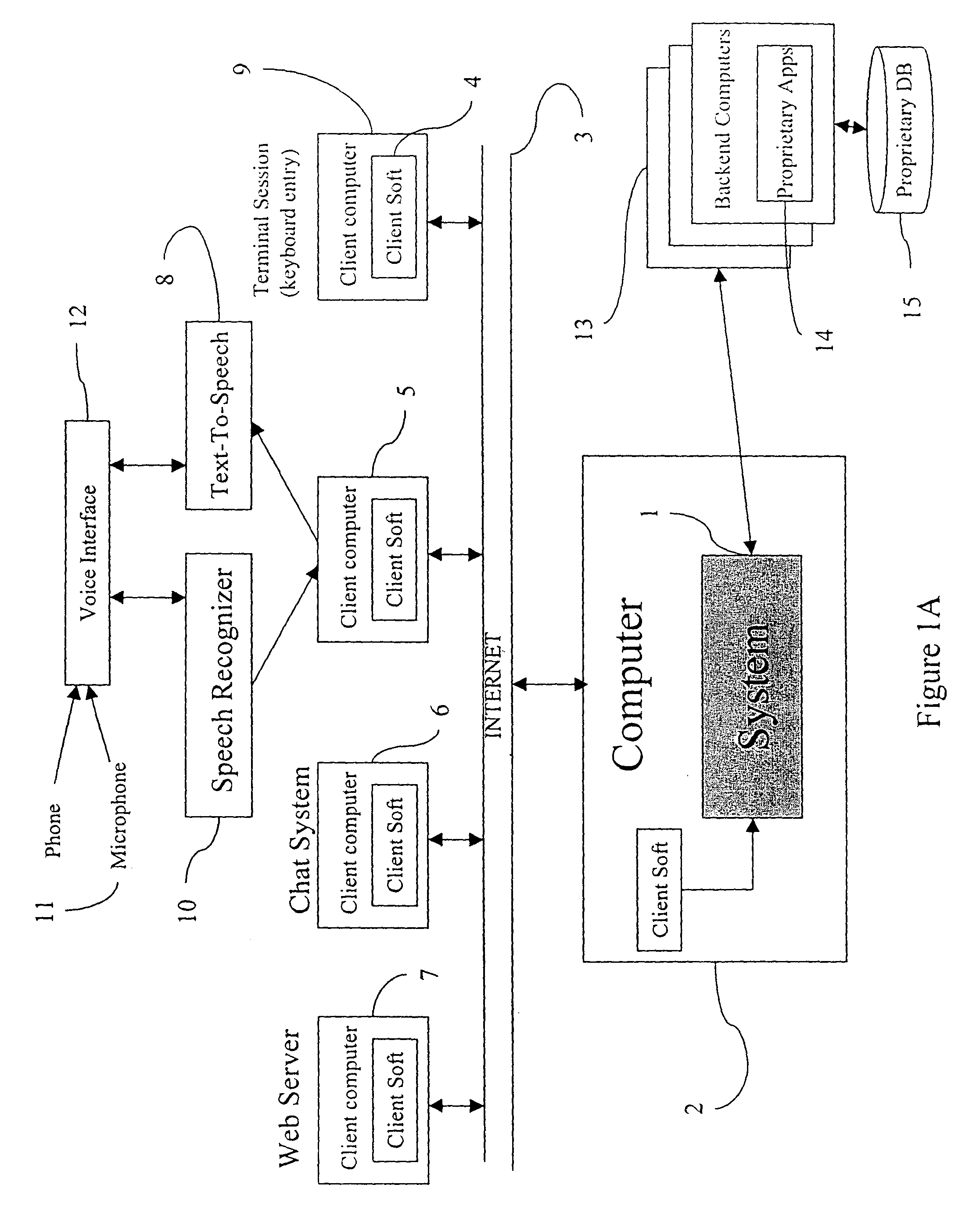Apparatus and methods for developing conversational applications
a conversational application and app development technology, applied in the field of appatus and methods for developing conversational applications, can solve the problems of not being scalable to other applications, not ready for the commercial arena, limiting the user to specify only simple, etc., and achieves the effect of convenient customization
- Summary
- Abstract
- Description
- Claims
- Application Information
AI Technical Summary
Benefits of technology
Problems solved by technology
Method used
Image
Examples
Embodiment Construction
Terminology
[0173]Unless we specified the type of system being referred to, such as a “database system”, an “airline information system”, etc, whenever the term “the system” or “the apparatus” is used, we referred to the system described under this invention.
[0174]Unless otherwise stated, the term “proprietary API” and “proprietary application” should be taken to mean either an application layer or a database system that it is proprietary to any business unit or to a third party software. The system described in this invention is therefore intended to re-use other third party software or applications that already perform certain functions of a business, such as transactions or queries. Any of such transactions or queries that may already exist in a business or a third party software should be considered as part of the “proprietary API”. Examples of third party software that fall under this category are all those known as web services (such as WebSphere® and WebLogic®) database softwa...
PUM
 Login to View More
Login to View More Abstract
Description
Claims
Application Information
 Login to View More
Login to View More - R&D
- Intellectual Property
- Life Sciences
- Materials
- Tech Scout
- Unparalleled Data Quality
- Higher Quality Content
- 60% Fewer Hallucinations
Browse by: Latest US Patents, China's latest patents, Technical Efficacy Thesaurus, Application Domain, Technology Topic, Popular Technical Reports.
© 2025 PatSnap. All rights reserved.Legal|Privacy policy|Modern Slavery Act Transparency Statement|Sitemap|About US| Contact US: help@patsnap.com



